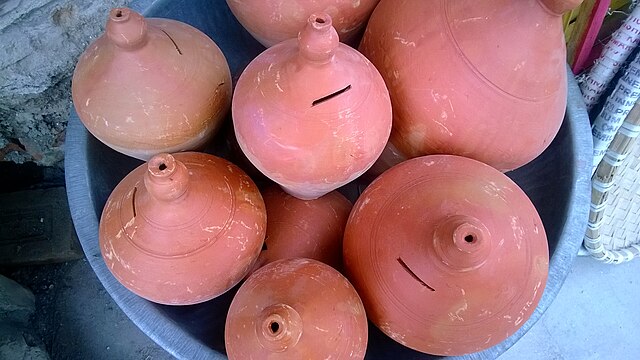Piggy bank is the traditional name of a coin container normally used by children. The piggy bank is known to collectors as a "still bank" as opposed to the "mechanical banks" popular in the early 20th century. These items are also often used by companies for promotional purposes, and many financial service companies use piggy banks as logos for their savings products.
A piggy bank, circa 1970.
Earthen pots used in Nepal as piggy banks.
An ancient Greek money box from Priene, 2nd century BC.
Majapahit terracotta piggy bank, 14th/15th century Trowulan, East Java. (Collection of National Museum of Indonesia, Jakarta)
Trowulan is an archaeological site in Trowulan Subdistrict, Mojokerto Regency, in the Indonesian province of East Java. It includes approximately 100 square kilometres and has been theorized to be the site of the eponymous capital city of the Majapahit Empire, which is described by Mpu Prapanca in the 14th-century poem Nagarakretagama and in a 15th-century Chinese source. When it was the capital of the Majapahit Empire, the city was known as Wilwatikta, which is a name also synonymous with the empire's name. It was razed during the invasion of Girindrawardhana to defeat Kertabhumi in 1478. After this event Majapahit's capital was moved to Daha (Kediri). The Trowulan Museum includes a collection of artifacts.
Bajang Ratu, the elegant paduraksa-style gate at Trowulan, Mojokerto
Bajang Ratu in 1929, before restoration
Sumur Upas excavation site, Trowulan, Mojokerto.
Candi Tikus bathing place








